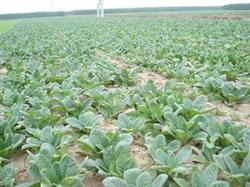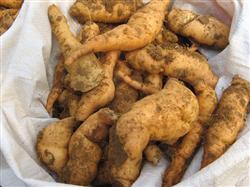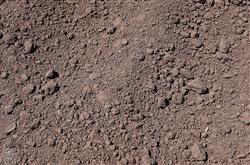Planting Rehmannia glutinosa: how to manage the growing period of Rehmannia glutinosa?

How to manage rehmannia growth period? Please give a detailed introduction to the management of rehmannia growth period can refer to the following methods: 1. Weeding in rehmannia field: After rehmannia enters the growth period, the root system develops rapidly. It is necessary to strengthen intertillage, promote deep root system, keep soil loose, control excessive plant growth and prevent weeds from growing. Strive for higher yields and quality. Dihuang growth period generally cultivated 4-5 times, the depth of cultivation, to gradually deepen. However, attention should be paid not to plough too deep at one time, especially when the moisture content is poor in drought, if the cultivation is too deep at one time, large pieces will be lifted, too many roots of rehmannia will be damaged, and the moisture will be removed by ventilation, which is unfavorable to the growth of rehmannia. After the stem and leaf of rehmannia are sealed, only weeds in the field are pulled out and no longer cultivated. 2. Dihuang plucking buds: In order to reduce the consumption of nutrients and promote the growth of rhizomes, when rehmannia buds, should be combined with weeding to remove buds and remove branches. Advocate one seedling per plant, remove excess bud tips, avoid nutrient consumption, and make plants not overcrowded, conducive to the healthy growth of plants. When the bottom leaves turn yellow in August, remove the yellow leaves in time to keep the field clean. 3. Fertilization and irrigation of rehmannia: In the growth period, topdressing should be carried out as early as possible. In the early stage of growth, nitrogen fertilizer should be applied mainly to promote plant health, and in the late stage of growth, phosphorus and potassium fertilizer should be applied mainly to promote rhizome growth and improve medicinal properties. When the plant grows 10 leaves and reaches 6-10 cm high, 75-100 kg of soybean cake or 10-15 kg of ammonium sulfate are applied per mu. Sprinkle alongside the plants. Note: fertilizer should not adhere to the leaves, so as not to burn seedlings, damage plants. After each fertilization, water should be watered in time to facilitate the full absorption of nutrients. High temperature rainy season, root rot occurs easily, resulting in yield decline, or even harvest, should be timely drainage fertilizer, generally 15 kg urea per mu. 4, timely removal of cross-skinned roots: In addition to the taproot, rehmannia can also grow slender underground stems along the surface, commonly known as string skin roots, which will lose more nutrients and should be eradicated in time. Click for more rehmannia cultivation technology Click for more herbal cultivation technology
- Prev

Dihuang planting: how to harvest and process Dihuang?
How to harvest and process rehmannia? Please give an introduction to the method of rehmannia harvesting and processing can refer to the following methods: 1, rehmannia harvesting: rehmannia leaves, flowers, rhizomes can be used as medicine. In the late stage of rehmannia growth, select healthy, disease-free plants, properly pick some leaves, dry in the shade on the...
- Next

Cultivation of Rehmannia glutinosa: how to manage it well?
How to manage Rehmannia glutinosa? What are the ways? Please give a detailed description of the method of Rehmannia glutinosa cultivation can be managed with reference to the following methods: 1. The choice of planting land of Rehmannia glutinosa: Rehmannia glutinosa should be selected with deep, fertile and well-drained sandy loam. Rehmannia glutinosa should not be replanted. Turn the soil 25 cm deep in the first winter or early spring.
Related
- Fuxing push coffee new agricultural production and marketing class: lack of small-scale processing plants
- Jujube rice field leisure farm deep ploughing Yilan for five years to create a space for organic food and play
- Nongyu Farm-A trial of organic papaya for brave women with advanced technology
- Four points for attention in the prevention and control of diseases and insect pests of edible fungi
- How to add nutrient solution to Edible Fungi
- Is there any good way to control edible fungus mites?
- Open Inoculation Technology of Edible Fungi
- Is there any clever way to use fertilizer for edible fungus in winter?
- What agents are used to kill the pathogens of edible fungi in the mushroom shed?
- Rapid drying of Edible Fungi

